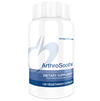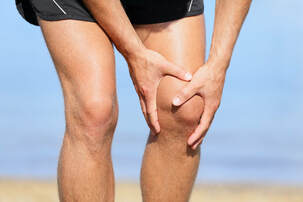|
Here at Elevated Natural Health, one of the pillars of our treatment protocols is Ozone Therapy. Read on to learn more about what it is, how it’s used, and why it may be for you.
What is ozone? Ozone is a gas and a form of oxygen found naturally in nature. It’s the smell you smell during a lightning storm. It consists of 3 atoms of oxygen bound together. In this form, the molecule is reactive, and it will break apart readily to form 2-atom molecules, which is the more stable form of oxygen and the type of oxygen that we breathe. What is the brief history of ozone? Ozone was first discovered in 1785 and has been used as an antimicrobial agent non-medically since at least the 1870s. It has been used medically since about 1900, first in European countries and later in the United States closer to the 1980s. How is it used medically? In medicine, we can use ozone many ways. It is used:
Ozone is so versatile in its applications. It really could be considered on almost all treatment plans! How could it be helpful for me? Are you struggling with poor immune function (chronic illness or repeat infection/illness)? Dealing with low metabolism? Poor circulation? Looking to improve your exercise performance? Interested in detoxing to improve your skin health? Or have a persistent rash that is not responding to other treatments? Why not give it a try? Ozone is fairly easy, relatively low cost, and exceedingly safe. It is definitely worth talking to you doctor about your options around ozone therapy. One more thing… Keep in mind that ozone is NOT approved for the use of anything by the FDA. It is NOT covered by insurance either. Therefore, it’s unlikely that conventionally trained medical doctors will have much education around the use of ozone for anything medical. Ozone IS toxic when it is inhaled (cautions are always made to prevent this from happening when we use it for any treatment). When used properly under the guidance of appropriately trained professionals, ozone is very effective and safe.
0 Comments
What are Food Allergies:
With food ALLERGIES, when you eat a contending food, there is an actual hypersensitivity reaction by the immune system leading to rashes, hives, itching of eyes or throat, or even anaphylaxis. This is the person that cannot even be in the same room as a dish of peanuts, for example. This is also the type of reaction some people have to a bee sting. This person should carry an EpiPen and be prepared to use it if they come in contact with the allergen. How to test: Typically testing is relatively easy and involves either a skin-prick test performed by an allergist (a type of doctor specializing in allergies and allergic reactions) OR a blood test checking for IgEs to a certain type of food. IgE molecules indicate a hypersensitivity reaction to a food group or other allergen (pollen, dander, etc), and anyone with IgEs to an allergen should carry an EpiPen. What are Food Sensitivities: Food Sensitivities are much more common reactions, though not as immediately life-threatening. Though, I do like to point out that people that have food sensitivities that go unaddressed are likely to have inflammation that becomes chronic and leads to a myriad of other life-threatening illnesses (i.e. cardiovascular diseases, cancers, memory/brain issues, arthritis, etc.). Inflammation is key when considering your overall health, and eliminating foods that are causing inflammation is paramount in maintaining and optimizing your health. Common reactions to food sensitivities include: rashes (eczema, psoriasis, acne), heart palpitations, asthma, hair loss, joint pain, digestive issues (reflux, diarrhea, constipation), post-nasal drip, sinus issues, headaches/migraines, and more. How to test: Testing is a bit more complicated than it is for Food Allergies (IgE reactions). With food sensitivities, sometimes people will have elevated IgG or IgA levels (different types of molecules in the immune system that recognize more chronic antigens). While some people acknowledge that you could have IgG and/or IgAs for any food you've eaten since your body has "seen" it and responded to it, I have seen that too high of IgG or IgA could also be a problem. It makes sense that when these IgG and/or IgA levels get too high, this indicates an over-response of your immune system, and thus increased inflammation from these foods. So, back to testing: Testing can be done with a blood test, an elimination/rechallenge diet, or a pulse test (or a combination of those). Each of these testing methods has pros and cons, but all of them do help guide you to understand your particular sensitivities. 1) Blood Test: Commonly done through private labs, this blood test takes an average of about 1-3 weeks to return and typically gives you a bar graph analysis showing the foods you have the highest reaction to. The pros: This is a very easy way to test and the data is pretty clear - it's easy to see which bar graphs are biggest, and thus it's easy to identify the foods you react the strongest to. Cons: This test costs money and it has a lot of false positives and false negatives by nature. 2) Elimination/Rechallenge Diet: This is a well-known way to strategically avoid foods that you are wanting to "test" for a food sensitivity. Typically, I recommend people avoid the testing foods for a period of 3-6 weeks, depending on their symptoms. After that time period, foods are reintroduced strategically and then we watch for symptoms to arise after the testing food. The Pros: This is the gold-standard for testing foods as the body doesn't lie. If you eat something and get a reaction, there's no question that you have a sensitivity to that food. This is a relatively inexpensive way to test, except the cost of wasted foods that you may find out you don't tolerate. The Cons: This test is difficult to adhere to for many people. It requires a lot of planning and strong-will to avoid the foods when not even certain if reacting to them or not. 3) Pulse Testing: This relatively simple testing method involves first counting your pulse for a minute, then tasting (holding in mouth but not swallowing) a questionable food and re-counting the pulse. If the pulse goes up by more than 6 beats in a minute, the person is likely to have a sensitivity to that food. So, do you have any of the Food Sensitivity symptoms? If so, are you ready to explore your Food Sensitivities? Even if you cannot pinpoint a particular negative symptom but you're still interested in checking foods, it could be worth testing the 8 most common food allergens/sensitivities (wheat, peanut, egg, milk, fish, soybean, shellfish, tree nut) and possibly another common food group that tends to trigger inflammation (the nightshade family of fruits/vegetables). Not sure where to start? Need help sorting out your data? Want to try a blood test? Great! I can help you with all of these and more. Simply fill out our Contact form here, and I'll get back to you right away.  by Dr. Jessica Corbeille Harris, ND Many people deal with chronic pain (and I have a lot of remedies both at-home and in-office for helping with that), but what about those recent injuries (i.e. acute injuries)? What do you do if you sprain your ankle playing soccer tomorrow? Or how about if you tweak your back doing some gardening this evening? Many people have heard of the R-I-C-E acronym for injuries which promotes the use of rest, ice, compression, and elevation. What if I told you those were the exact opposite of what is actually needed for proper healing of the tissue? Instead, when people are injured, I always say, “Ask for your M-A-M-A” – which promotes the use of massage, alternating hot and cold, movement, and arnica to encourage a healthy inflammatory response to allow for proper tissue healing. Generally speaking, most of these are safe for most people, but as for any of my recommendations, if you have any questions or concerns about the safety of the remedies for you, it’s always best to consult your physician.
On the other hand, if your injury is not improving after a day or two or seems to be getting worse over that period, it’s always best to seek medical attention either at the emergency department or with your primary physician. Similarly, if your injury initially improves but you are left with pain or inflammation weeks or months after the injury occurs, it’s also a good time to seek attention from a trained physician to help with this situation. (This may be a good time for some of the prolotherapy treatments I write about as well - check them out here!) Questions? Would you like to discuss your acute or chronic pain/injury? I’d love to connect with you! Check out the Contact page on our site or send me an email at [email protected]. by Dr. Jessica Corbeille Harris, ND
Physical reactions to foods are common, but not all physical responses are classified as a true “food allergy” – many are deemed “food intolerances” instead. What’s the difference? Food Allergies: An immediate immune system response to a food (even a tiny amount of that food) that causes sometimes widespread involvement in the body including (but not limited to) hives, anaphylaxis (closure of airway), asthma reaction, swelling, itching, or immediate GI distress/diarrhea. Food Intolerance: An immune system response that is often delayed and can cause wide-spread, non-specific, sometimes less severe systemic responses. Sometimes a little bit of the food isn’t enough to trigger symptoms (but sometimes it is!). Common food intolerance symptoms include: GI upset (most common), increase in muscle and/or joint pain, headache, irritability/mood changes, depression/anxiety, breathing difficulties (less severe than an asthma attack or anaphylaxis), heartburn, ear infections, sinus congestion, post-nasal drip, urinary pain or discomfort, skin reactions (eczema, psoriasis, rashes, etc.), heart palpitations, and more. Basically, many of the symptoms people experience regularly can be caused by the foods they are eating. It’s important to understand the difference between a true allergy and an intolerance, but often in either case, the problematic food/foods will be avoided (obviously this is a much more serious recommendation in the case of anaphylactic food allergens!). One important symptom that I like to point out to patients at my clinic is the association with food to pain.The majority of my patients seek treatment with me for their pain, but many of them are not expecting me to suggest a food allergy/intolerance test as part of the work-up for the cause of their pain. Yes, I do like to treat pain with injection therapies (i.e. prolotherapies, PRP, neural therapies, etc.), but if the patient continues to eat a food that is causing them inflammation (pain), then the treatments are not likely to have a lasting effect – and sometimes they don’t work at all until the problematic food(s) are eliminated. For this reason, I often will order a food intolerance test for patients as part of their initial workup when I suspect food as a component to their pain problem. The testing I use is relatively inexpensive and results come back quickly. These tests are really excellent ways to figure out quickly the most likely problematic food triggers for their body – and I OFTEN see that eliminating problematic foods for a period of time (or for good) will SIGNIFICANTLY change their pain problem! Are you ready to explore your food intolerances? If so, send us a message through our Contact page today! by Dr. Jessica Corbeille Harris, ND
I’ve been getting the question a lot lately – “Why does PRP work for healing my joints and also for treating my sagging skin?” So, I thought I’d share a little more about Platelet Rich Plasma (PRP) therapy. For a PRP treatment, we collect a sample of the patient's own blood, process it to collect growth factors, combine it with nutrients and ozone gas, and then inject it into the damaged tissues (tendons, ligaments, bone, skin, etc.). PRP is loaded with concentrated growth factors from your body’s own immune system which is really the magic in the medicine. The healthier a patient is to begin with, the “better” their PRP product is, which means the better results they will get from a PRP treatment. In the case of joint pain, the growth factors in the PRP help the body to heal and regenerate soft tissues (like tendons and ligaments) which helps to stabilize the joint and therefore decrease the pain. Often, people think they have sore and/or tight muscles which is causing their pain. In reality, the muscles have become sore and tight to compensate for weak tendons and ligaments. So, by treating the damaged tendons and ligaments to stabilize the joint, we can actually treat the pain! With wrinkled and sagging skin, there is a similar loss of soft tissue – collagen, in this case. The growth factors from the PRP are injected here to support the collagen matrix under the skin, thus providing more of a scaffold for the top layer of the skin to hold on to. This ultimately decreases the wrinkles, “sagging”, scaring, and the dreaded “bags” under the eyes. For hair regeneration, the growth factors in the PRP work to help the hair follicles regenerate thus promoting hair growth in areas where the hair follicle had degenerated. The injections themselves also work to improve circulation to the area which naturally increases hair growth as well. PRP, although wonderful and capable of dramatic results, is an advanced technique requiring special equipment and training by the practitioner. Always consult with your practitioner about their specific methods, ingredients, training and other details of the procedure to gain a full understanding of how their product and method can help you. If you're interested in getting started with PRP treatments today, send us an inquiry from our Contact page today or give us a call at 206-566-7225. by Dr. Jessica Corbeille Harris, ND  I see many patients every day who struggle with pain. Sometimes joint pain, sometimes back or neck pain, sometimes muscle pain, and sometimes headaches. One thing these pains all have in common is they are symptoms. And symptoms are always a message from the body to tell us something is not quite right. When the body has all the nutrients, sleep, happiness, support, and water that it needs, the body is free of symptoms. Let’s talk today about one foundational part of your body’s needs – adequate nutrition, and this starts at the dinner table. So let’s say the body isn’t getting the right nutrients it needs. Without the proper nutrients, it cannot make enzymes work properly. Without properly working enzymes, certain things like soft tissue repair cannot happen properly. When the soft tissues are not repaired, other tissues have to work harder (i.e. muscles), and this can lead to the symptom we experience as PAIN. This means that one of the ways we can treat pain before we even use treatments like prolotherapy or PRP is by supporting the soft tissue repair. And to support soft tissue repair, we need the proper nutrients. Research has shown a few nutrients to be especially important in healing and repair of soft tissues, like collagen, for example. Some of these key nutrients are protein, vitamin C, zinc, copper, and manganese.
Please note that the list above is not all-inclusive (other nutrients can be very important for treatment pain too – i.e. magnesium, calcium, MSM, etc.). Diet is a great place to start when it comes to treating pain though. It’s essential that a person is getting the proper nutrition BEFORE we start treatment with prolotherapy, PRP, or other fancy treatment options to ensure your body has the building blocks it needs to make the treatment most effective. Here’s one of my favorite products for pain and healing: ArthroSoothe by Designs for Health. You can find it on our online dispensary or at our clinic. Please email us or give us a quick call today if you are ready to start talking about treating your pain! by Dr. Jessica Corbeille Harris, ND, CES by Dr. Jessica Corbeille Harris, ND  What is prolotherapy? Prolotherapy is a type of regenerative joint therapy. By this, I mean that it is a therapy that helps your connective tissues to heal and regenerate thus supporting your joints better. There are a variety of prolotherapy types and all different cocktails of combinations of nutrients that are injected and called, “prolotherapy.” In the case of sore joints and sometimes even sore muscles, often it is the connective tissues – the tendons and ligaments – that are the true root cause of the pain…NOT the “tight” muscles! The connective tissue is not highly vascular, so it does not get good blood supply or delivery of nutrients. Thus, it is easily injured, strained, torn, or degenerated. When the connective tissue is injured, it cannot do its job – so other tissues are recruited to do the work – the muscles and fascia. The muscles and fascia then become tight and are overworked as they work to keep the joints supported and the body moving properly. Overtime, we experience this instability as muscle soreness and pain. With prolotherapies, we are aiming to treat these injured, strained, torn, and/or degenerated tissues and joints with nutrients (like dextrose) and sometimes stronger things like growth factors (in the case of PRP/platelet rich plasma) or even stem cells. Once the connective tissues heal, it takes the workload down for the muscles, so the muscles can go back to just doing their normal job of getting the body to move – not also stabilizing and keeping the body together too. Why does prolotherapy help knee pain? If you’ve injured your knee, chances are you’ve sprained, torn, or otherwise caused extra strain on some of the connective tissues. This causes the muscles around the knee to tighten, as discussed above, to keep your femur (thigh bone) and tibia and fibula (shin bones) together. The muscles get sore and eventually we experience pain. If we can treat the injured connective tissue by testing for and treating the connective tissues (i.e. ACL, MCL, meniscus, etc.), then the muscles can relax and go back to doing their normal job. Does Prolotherapy help other joints too? Absolutely. If there’s a soft tissue injury, prolotherapy can help! Am I a good candidate? People that tend to do the best with prolotherapy are those that generally take good care of their bodies in the first place. Generally speaking, this includes people who participate in moderate exercise 3 or more days per week and eat a whole-foods based diet low in inflammatory foods (like sugar, alcohol, and preservatives) and high in vegetables and fruit. The best way to know if you have connective tissue injury and if you would benefit from prolotherapy is to have an initial consultation with your prolotherapy doctor. What does the treatment look like – is it a “one-shot-wonder”? Dr. Corbeille can determine on the first visit if you are a candidate and if you likely have connective tissue injury. You are welcome to bring imaging results if you have them, though they are not always necessary. Typical treatment plans will be for 3-6 treatments usually at 4-6 weeks apart. Sometimes Dr. Corbeille will recommend PRP or other nutrient additives, depending on your particular condition and overall health. You can expect improvement gradually as you complete the treatments such as improved range of motion, improved function, and hopefully less pain. Dr. Corbeille will always re-evaluate at the end of the treatment plan to determine the next steps for you. _____ Stay tuned for a future post regarding which supplements to start taking now to improve your joint and connective tissue health! |
AuthorThe Doctors at ENH post to this page regularly with new health information, home remedies, and other interesting tidbits. Archives
May 2024
Categories
All
|
DISCLAIMER: THIS WEBSITE DOES NOT OFFER MEDICAL ADVICE. THE CONTENT OF THIS ELEVATED NATURAL HEALTH WEBSITE AND ANY LINKS INCLUDED ARE INTENDED ONLY FOR EDUCATIONAL AND INFORMATIONAL PURPOSES OR TO DESCRIBE THE CLINICS PRODUCTS AND SERVICES. THIS WEBSITE AND ITS CONTENT ARE NOT INTENDED TO PROVIDE PROFESSIONAL MEDICAL ADVICE, DIAGNOSE THE HEALTH CONDITION OF ANY INDIVIDUAL OR SUBSTITUTE FOR PROFESSIONAL GUIDANCE IN THE ADMINISTRATION OF ANY TREATMENT. YOU SHOULD ALWAYS SEEK THE ADVICE OF A LICENSED PHYSICIAN OR OTHER QUALIFIED HEALTHCARE PRACTITIONER REGARDING ANY PERSONAL CONCERNS AS TO SYMPTOMS, MEDICAL CONDITIONS, OR THE USE OF ANY PRODUCTS. SUCH COUNSEL SHOULD NOT BE DISREGARDED OR DELAYED BASED UPON ANY INFORMATION CONTAINED WITHIN THIS WEBSITE. DR. JESSICA CORBEILLE-HARRIS, ND AND DR. MCKENZIE J TIMMER, ND EACH HAVE A DOCTORATE IN NATUROPATHIC MEDICINE AND ARE LICENSED NATUROPATHIC PHYSICIANS IN THE STATE OF WASHINGTON. ANY REFERENCE TO THE PRACTICE OF NATUROPATHIC MEDICINE DOES NOT APPLY IN STATES WHERE NATUROPATHIC MEDICINE IS NOT LICENSED.
Proudly powered by Weebly


 RSS Feed
RSS Feed